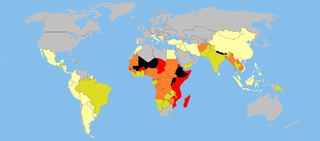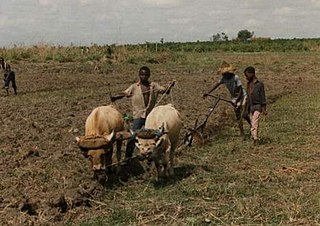Related Research Articles

Child labour is the exploitation of children through any form of work that interferes with their ability to attend regular school, or is mentally, physically, socially and morally harmful. Such exploitation is prohibited by legislation worldwide, although these laws do not consider all work by children as child labour; exceptions include work by child artists, family duties, supervised training, and some forms of work undertaken by Amish children, as well as by Indigenous children in the Americas.

The Factory Acts were a series of acts passed by the Parliament of the United Kingdom beginning in 1802 to regulate and improve the conditions of industrial employment.

The Offences against the Person Act 1861 is an Act of the Parliament of the United Kingdom of Great Britain and Ireland. It consolidated provisions related to offences against the person from a number of earlier statutes into a single Act. For the most part these provisions were, according to the draftsman of the Act, incorporated with little or no variation in their phraseology. It is one of a group of Acts sometimes referred to as the Criminal Law Consolidation Acts 1861. It was passed with the object of simplifying the law. It is essentially a revised version of an earlier consolidation act, the Offences Against the Person Act 1828, incorporating subsequent statutes.

The Elementary Education Act 1870, commonly known as Forster's Education Act, set the framework for schooling of all children between the ages of 5 and 12 in England and Wales. It established local education authorities with defined powers, authorized public money to improve existing schools, and tried to frame conditions attached to this aid so as to earn the goodwill of managers. It has long been seen as a milestone in educational development, but recent commentators have stressed that it brought neither free nor compulsory education, and its importance has thus tended to be diminished rather than increased.
The UK Vaccination Acts of 1840, 1853, 1867 and 1898 were a series of legislative Acts passed by the Parliament of the United Kingdom regarding the vaccination policy of the country.

The Agricultural Gangs Act 1867 was an Act of the Parliament of the United Kingdom.

The Gangmasters and Labour Abuse Authority (GLAA) is the foremost intelligence and investigative agency for labour exploitation in the UK. Its role is to work in partnership with police and other law enforcement agencies such as the National Crime Agency to protect vulnerable and exploited workers and disrupt and dismantle serious and organised crime.
The Temporary Labour Working Group was a UK industry consortium set up to establish a set of minimum standards for employment agencies working in agriculture and horticulture. It was founded in September 2002, convened by the Ethical Trading Initiative and managed by Impactt Limited. It led to the passing of the Gangmasters (Licensing) Act 2004 and the formation of the Gangmasters Licensing Authority.
United Kingdom agency worker law refers to the law which regulates people's work through employment agencies in the United Kingdom. Though statistics are disputed, there are currently between half a million and one and a half million agency workers in the UK, and probably over 17,000 agencies. As a result of judge made law and absence of statutory protection, agency workers have more flexible pay and working conditions than permanent staff covered under the Employment Rights Act 1996.

The Gangmasters (Licensing) Act 2004 is an Act of the Parliament of the United Kingdom that regulates the agencies that place vulnerable workers in agricultural work, and the shellfish collecting and packing industries (s.3). It is the most recent plank of UK agency worker law. It establishes the Gangmasters Licensing Authority (s.1), which requires that all such agencies have a licence before they operate, and adhere to proper labour practice standards. Most of its provisions came into effect after 2005. The immediate cause of the legislation was the 2004 Morecambe Bay cockling disaster, where 21 Chinese immigrant labourers were left to drown by their employers off the coast of Lancashire as the tide swept in around them.
The History of labour law in the United Kingdom concerns the development of UK labour law, from its roots in Roman and medieval times in the British Isles up to the present. Before the Industrial Revolution and the introduction of mechanised manufacture, regulation of workplace relations was based on status, rather than contract or mediation through a system of trade unions. Serfdom was the prevailing status of the mass of people, except where artisans in towns could gain a measure of self-regulation through guilds. In 1740 save for the fly-shuttle the loom was as it had been since weaving had begun. The law of the land was, under the Act of Apprentices 1563, that wages in each district should be assessed by Justices of the Peace. From the middle of the 19th century, through Acts such as the Master and Servant Act 1867 and the Employers and Workmen Act 1875, there became growing recognition that greater protection was needed to promote the health and safety of workers, as well as preventing unfair practices in wage contracts.

Child labour in Bangladesh is significant, with 4.7 million children aged 5 to 14 in the work force in 2002-03. Out of the child labourers engaged in the work force, 83% are employed in rural areas and 17% are employed in urban areas. Child labour can be found in agriculture, poultry breeding, fish processing, the garment sector and the leather industry, as well as in shoe production. Children are involved in jute processing, the production of candles, soap and furniture. They work in the salt industry, the production of asbestos, bitumen, tiles and ship breaking.

The Shops Act 1911 was a United Kingdom piece of legislation which allowed a weekly half holiday for shop staff. This became known in Britain as "early closing day". It formed part of the Liberal welfare reforms of 1906–1914.

The Sanitary Act 1866, sometimes called the Public Health Act 1866, was an Act of the Parliament of the United Kingdom. The Act allowed the formation of drainage districts and enabled the provision of better house drainage. The second part of the Act dealt with nuisances and stated that it was the duty of councils to locate nuisances and remove them.

A significant proportion of children in India are engaged in child labour. In 2011, the national census of India found that the total number of child labourers, aged [5–14], to be at 10.12 million, out of the total of 259.64 million children in that age group. The child labour problem is not unique to India; worldwide, about 217 million children work, many full-time.

The Agricultural Children Act 1873 was an act of the Parliament of the United Kingdom, which prohibited the agricultural employment of children under the age of eight and also provided for the education of children involved in farm labour. As part of this, the act stated that children could not be employed in agricultural work without parental confirmation that they had attended school a certain number of times in the preceding twelve months, specifically 250 times for children aged eight to ten and 150 times for individuals over the age of ten.

Child labour in Africa is generally defined based on two factors: type of work and minimum appropriate age of the work. If a child is involved in an activity that is harmful to his/her physical and mental development, he/she is generally considered as a child labourer. That is, any work that is mentally, physically, socially or morally dangerous and harmful to children, and interferes with their schooling by depriving them of the opportunity to attend school or requiring them to attempt to combine school attendance with excessively long and heavy work. Appropriate minimum age for each work depends on the effects of the work on the physical health and mental development of children. ILO Convention No. 138 suggests the following minimum age for admission to employment under which, if a child works, he/she is considered as a child laborer: 18 years old for hazardous works, and 13–15 years old for light works, although 12–14 years old may be permitted for light works under strict conditions in very poor countries. Another definition proposed by ILO's Statistical Information and Monitoring Program on Child Labor (SIMPOC) defines a child as a child labourer if he/she is involved in an economic activity, and is under 12 years old and works one or more hours per week, or is 14 years old or under and works at least 14 hours per week, or is 14 years old or under and works at least one hour per week in activities that are hazardous, or is 17 or under and works in an "unconditional worst form of child labor".

The National Agricultural Labourers Union (NALU) was a trade union representing farm workers in Great Britain.
Street trading is selling from a stall, stand, or vehicle in the street rather than in a market hall or square. A collection of regular, and adjacent, street traders forms a street market. Where traders operate on their own, from a regular location, these are variously described as isolated pitches, scattered sites, or miscellaneous sites. Peripatetic traders are termed pedlars.

The Salmon and Freshwater Fisheries Act 1923 was an act of Parliament passed by the United Kingdom Government which attempted to consolidate fishery legislation, which at the time consisted of the Salmon Fishery Act 1861 and 18 amending Acts which had been passed subsequently.
References
- ↑ "House of Commons - Environment, Food and Rural Affairs - Fourteenth Report". publications.parliament.uk. Retrieved 2020-12-11.
- ↑ "House of Commons - Environment, Food and Rural Affairs - Fourteenth Report". publications.parliament.uk. Retrieved 2020-12-10.
- 1 2 3 4 One or more of the preceding sentences incorporates text from a publication now in the public domain : Chisholm, Hugh, ed. (1911). "Agricultural Gangs". Encyclopædia Britannica . Vol. 1 (11th ed.). Cambridge University Press. pp. 387–388.
- ↑ "Agricultural Gangs | History Today". www.historytoday.com. Retrieved 2020-12-10.
- ↑ Chambers, George F. (George Frederick) (1873). The Agricultural Children Act, 1873, and the Agricultural Gangs Act, 1867 : with introduction and notes. University of Illinois Urbana-Champaign. London : Knight & Co., 90, Fleet Street. p. 10.